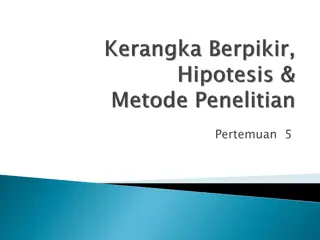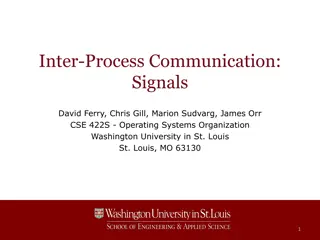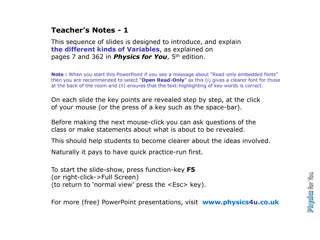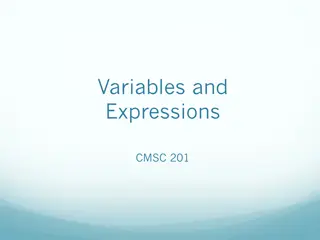Data Selection for Signal Variables and Efficiency Optimization
Utilizing a Boosted Decision Tree (BDT) method, this presentation discusses the selection of signal input variables for Xic particles, maximizing the S/sqrt(S+B) ratio for signal efficiency in particle physics analysis. The process involves using real data as input variables, cutting variables to improve efficiency, and assessing the impact on S/sqrt(S+B) ratios for different cuts, ultimately aiming to enhance the analysis of OmegacS particles.
Download Presentation

Please find below an Image/Link to download the presentation.
The content on the website is provided AS IS for your information and personal use only. It may not be sold, licensed, or shared on other websites without obtaining consent from the author.If you encounter any issues during the download, it is possible that the publisher has removed the file from their server.
You are allowed to download the files provided on this website for personal or commercial use, subject to the condition that they are used lawfully. All files are the property of their respective owners.
The content on the website is provided AS IS for your information and personal use only. It may not be sold, licensed, or shared on other websites without obtaining consent from the author.
E N D
Presentation Transcript
Selections on data Dong Ao 1
Used BDT method First one: Used Xic real data as input signal input variables: Xic_ENDVERTEX_CHI2, Xic_DIRA_OWNPV, daughter particle s PT, daughter particle s IPCHI2_OWNPV 2
Used BDT method Second one: Used Xic real data(after first BDT cuted) as input signal input variables: daughter particle s ProbNN 3
Find the max cut efficiency To get the max S/sqrt(S+B) of Omegac S(number of signal) S/sqrt(S+B) S(number of signal) S/sqrt(S+B) 4
Orginal data S S+B S/sqrt(S+B) 25273 420689 38.7 BDT cut S S+B S/sqrt(S+B) BDT>0.110 17704 105659 54.4675 BDT cut && pidBDT cut S S+B S/sqrt(S+B) pidBDT>0.01 16079 61673 64.746 5























